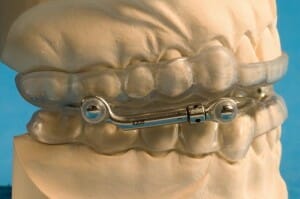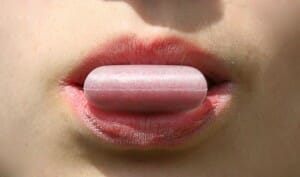Snoring is an issue that affects between 94 and 157 million Americans each year. Such a widespread issue gets a lot of attention from snorers and particularly those who have to live with them. An increasing number of snore relief products have hit the shelves in the past decade. A few of these products work to some degree while others are simply not at all effective.
One product that has received a lot of attention recently is the snore relief mouthpiece. While the concept of this device is nothing groundbreaking, an increasing number of new designs are entering the market each year. Products are continuously improved year after year, making them more comfortable, more affordable, and more effective than ever.
Snore relief mouthpiece history
 Originally developed in the 1980’s, the snoring relief mouthpiece was commonly referred to as a “mandibular advancement device”, “mandibular advancement splint“, or simply an “oral appliance”. The initial use and research were primarily focused on the treatment of Obstructive Sleep Apnea (OSA). Since OSA and snoring are often closely related, someone saw an opportunity to market the device to the masses as a snoring mouthpiece in the early 1990’s.
Originally developed in the 1980’s, the snoring relief mouthpiece was commonly referred to as a “mandibular advancement device”, “mandibular advancement splint“, or simply an “oral appliance”. The initial use and research were primarily focused on the treatment of Obstructive Sleep Apnea (OSA). Since OSA and snoring are often closely related, someone saw an opportunity to market the device to the masses as a snoring mouthpiece in the early 1990’s.
The original OTC mouthpieces were constructed of a thermoplastic material which is designed to hold the lower jaw forward. Advancements were made over the years and today’s devices are slimmer, more adjustable and more comfortable than ever before. While some manufacturers stick with the original design, more sophisticated designs are able to accommodate a wider variety of snorers.
How do they work?
When most people see a snore relief mouthpiece they often question the effectiveness of such a device. After all, how does a simple piece of plastic placed in the mouth stop snoring?
These small devices work by holding the lower jaw in a slightly forward position using the upper teeth as a point of leverage. Only a millimeter or two of advancement beyond where the upper teeth meet the lower teeth usually does the job. With the lower jaw in the forward position, a series of muscles and soft tissue which lines the throat “tightens” up. The tightening action makes the airway less restrictive making it less likely for airway tissues to flap around. In the majority of cases, these vibrating tissues are to blame for the sound of snoring.

The Good Morning Snore Solution is a type of Tongue Stabilizing Device.
While most of today’s products work by advancing the lower jaw, there is a special product classified as a “tongue stabilizing devices”. This type of device works using a similar concept yet holds the tongue forward. It sticks to the end of the tongue using suction created by a small bulb. An example of this type of device is the Good Morning Snore Solution or the AveoTSD.
As you can see, there is no “magic” involved when treating snoring using this method. Unlike several other treatment options, there are no secret ingredients and no mysterious gimmicks. This snore relief product works by the use of a simple mechanics which physically tighten and opens the airway preventing the sound of snoring.
There are several factors that one should consider while selecting a device. However, the two most important factors are comfort and effectiveness. Many of the older designs are thicker which often causes a bit of discomfort. Several newer devices can be used with minimal discomfort.
How do I know if one will work for me?

Hold your jaw forward and try to make the snoring sound
While a snore relief mouthpiece works well in most cases, it’s not the solution to everyone’s snoring problem. Other issues may exist such as nasal obstructions, a deviated septum, airway abnormalities or issues with the overall jaw and airway structure. Here’s a simple test that you may want to try in order to determine whether or not such a device may be a good fit for you:
- Replicate the sound of snoring right now while awake.
- While making this sound, slowly move your lower jaw forward.
If the sound of snoring disappears or lessens then there is a good chance that it will work for you. Remember, it’s always best to discuss all snoring issues with your doctor prior to exploring the best treatment solution.
Which mouthpiece should I buy?
The anti-snoring mouthpiece is one of the most highly effective stop snoring solutions available. With over 100 different products to choose from, deciding which one to buy can be challenging.
As a snorer and product reviewer, I have tried many of these devices and created a list of recommended devices that will help to make this decision much easier.
Share This Post: